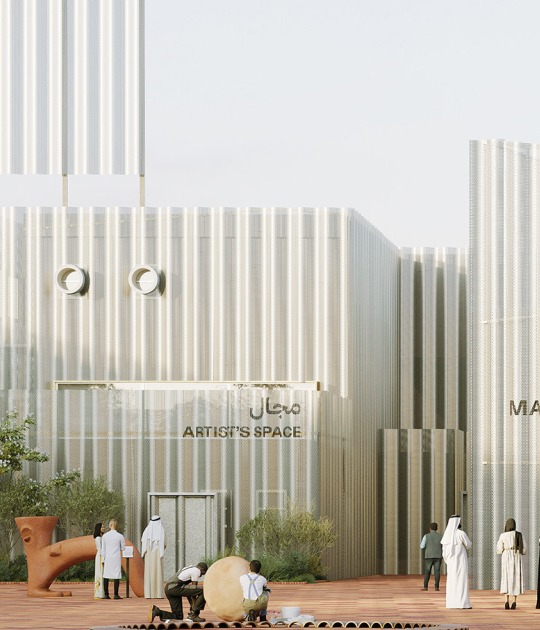OMA’s renewal strategy combines the careful transformation of both the existing monuments and the industrial buildings with the introduction of three new buildings, which extend the repertoire of spaces and offer programmatic possibilities not available in the existing buildings. The site will include a diverse mix of offices for creative businesses, hotel, event space, cultural venues, retail spaces and restaurants distributed over the entire site, enlivening the pedestrian experience. Two new access points will improve the accessibility of Columbia Circle from the surrounding streets and connect the outdoor spaces designed by landscape architects West 8.
With Columbia Circle, OMA further expands its portfolio related to preservation projects and redevelopment of existing structures, which includes the regeneration of industrial site Largo Isarco for the establishment of cultural venue Fondazione Prada (Milan, 2015); the redevelopment of a Soviet canteen in Garage Gorky Park into Garage Center of Contemporary Art (Moscow, 2015); the renovation of Fondaco dei Tedeschi (Venice, 2016); and the redesign of former coal mine Zeche Zollverein (Essen, 2007) into a museum and visitors center.
OMA’s approach to regeneration, respecting the multi-layered history and current character of the site, fits with the present-day preservation and redevelopment ambitions in China. After the recent completion of Shanghai Lujiazui Harbour City Exhibition Centre, Columbia Circle is OMA’s second project in Shanghai. OMA is collaborating with ECADI (LDI) and West 8 (landscape architect) on this project.
































